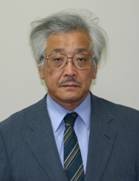Biodiversity in Satoyama: monitoring, assessment and conservation in the Pan-Japan Sea area
|
 |
Satoyama areas stretch between urban areas and natural areas in mountainous regions, making up 40% of national land. These areas, accounting for about half of the sites where many endangered species are found, are key to biodiversity conservation in Japan (The National Biodiversity Strategy of Japan, 2002). Satoyama system, which was a harmonious relationship between humans and nature, and was sustainable over a long period of time, is one of the models that our society in 21st century must look back.
In Satoyama area at Kakuma campus of Kanazawa University, our main study site and one of the IBOY-DIWPA sites, we have been monitoring biodiversity for 5 years. Our study includes the inventory, phenology, annual change, and ecological relationships (e.g. flowers-pollinators, fungi-insects, and seed dispersal by birds) . We will examine the effects of management of wood lands and restoration of terraced paddy fields on the biodiversity. At the Kakuma forest canopy tower (20m high), we are recording climate data and collecting yellow sands and aerosols brought from the Asian continent. This year, we plan to launch a net work, SBOY (Satoyama Biodiversity Observation Year), in Ishikawa Prefecture (15 sites) and in China, Korea and Russia as well. This study aims to clarify the Satoyama problems over the Pan-Japan Sea area, and will propose land management plans for good Satoyamas.



